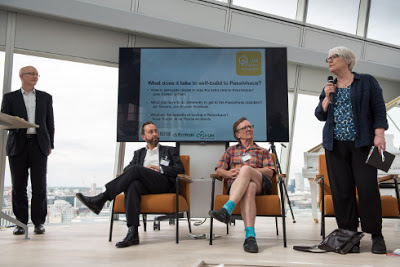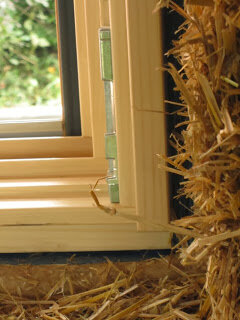The low energy - Enerphit - retrofit of a 1980’s block of flats seemed to be a fairly straight forward project of wrapping the building up in insulation, but because it was built of cavity blockwork, with hollow plank floors, the airtightness envelope was difficult to achieve. We used a technique of creating and airtight column in the cavity wall, developed by Lliam Schofield at Nesthaus (and others). Lliam came to site to demonstrate. Drilling at 150mm centres vertically and injecting airtight foam, a barrier column is created. This made it possible to join the airtight barrier outside (most of the walls) to that inside the building (at party wall) .
The other difficulty was airtightness testing. The first and second floor flats all have front doors onto a shared corridor, but the ground floor flats open onto the street. Initially we thought we would be creating the airtightness barrier for each ground floor flat separately, but that proved to be complex and expensive. We thought it might be possible to test the whole block, if we could leave the old service ducts open to the ground floor until testing was compete. Paul Jennings, who did the testing, was concerned that the air pressure might not be even, which would distort the results. His plan was to run a separate line to one of the ground floor flats to check the pressure was even.
We didn’t know if it would work and the initial airtightnss test had us all on tenterhooks. We were all really celebrating after the initial test, when the two lines confirmed equal pressure, and the overall result was 0.36 air changes per hour - a fantastic result! We knew the final result would be less good, as there were lots of penetrations to follow, but nontheless the final result achieved was much better than the 1 airchange per hour required for Enerphit, at 0.66AC/hr.

































































